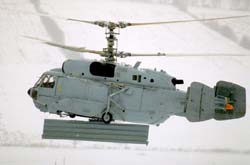
PARIS (AFP) - India, critically short of energy to fuel its booming economy, on Tuesday shed its nuclear outcast status when it signed a landmark atomic energy pact with France.
The deal effectively ended a ban on countries selling civilian nuclear technology and equipment to New Delhi, which was imposed in 1974 when India used its civilian programme to produce and successfully test an atomic bomb.
Indian Prime Minister Manmohan Singh, in Paris after a week-long trip to the US where he saw the House of Representatives back a US atomic pact with India, signed the deal with French President Nicolas Sarkozy.
France, the world's second producer of nuclear energy after the United States, hopes to lead a worldwide revival of the industry fuelled by worries about global warming and soaring energy prices.
India is now allowed to go shopping for technology and nuclear reactors after the 45-nation Nuclear Suppliers Group lifted its ban on New Delhi in early September after hard lobbying by Washington.
Singh and Sarkozy made no public comment after signing the nuclear deal, but a French presidential advisor noted that "today we are at the intergovernmental stage, and after that the industrialists will begin their cooperation."
French state-backed nuclear giant Areva said Monday it hoped to negotiate the delivery to India of two reactors as well as nuclear fuel.
India, which currently has 22 nuclear reactors, has a nuclear market estimated at 100 billion euros (142 billion dollars) over 15 years.
The French anti-nuclear group Sortir du Nucleaire (End Nuclear Power) denounced the atomic agreement.
"For having helped the US and India get round the rules of non-proliferation, France will be able to sell nuclear reactors to India. These are nauseating deals that endanger the future of the planet," it said.
India was banned from nuclear trade after it built an atomic bomb it hoped would give it military dominance over its neighbour and rival Pakistan, which also went on to build its own bomb despite international protest.
New Delhi, long a Soviet ally, is now a strategic partner for both the European Union and the US and is seen as a relative haven of stability in an often volatile region that includes Pakistan and Afghanistan.
A country of 1.1 billion people that many see as one of the future great powers of the 21st century, India currently gets only a fraction of its electricity from nuclear power.
Observers say that more nuclear plants in India could help reduce global demand for oil and gas, and proponents of nuclear energy say it will help the emerging economic giant fight pollution.
Sarkozy said Monday at an EU-India summit that he did not see how "India can fight global warming without nuclear energy, which is a clean energy. That would be totally incoherent."
The United States is also keen to tap into the Indian nuclear market, but with Tuesday's deal France, which will also have to compete with Japan and Russia, has stolen a march on the US.
The French presidential advisor, who asked not to be named, insisted however that the two countries had worked together to persuade the Nuclear Suppliers Group and the IAEA, the UN's atomic watchdog, to lift the ban on New Delhi.
"There was no race" to be first to sign a deal, he said.
The US atomic trade pact with India, a key foreign policy for President George W. Bush, must now win approval from the Senate.
But that could be delayed because of the presidential election in November, further delaying the US entry into the market.
US Secretary of State Condoleezza Rice said Tuesday she hoped the nuclear pact with India would soon pass the final US legislative hurdle, saying it would "solidify" US-Indian ties.
Some US lawmakers have fought against the deal, which would give New Delhi access to US technology provided it allows UN inspections of some of its nuclear facilities -- but not its atomic weapons plants.
They argue it rewards India for breaking the international nuclear rules and thus might encourage Iran, which is accused of using its civilian nuclear programme to build a bomb.
Critics of the potential US deal with India -- which has refused to sign the Non-Proliferation Treaty allowing civilian nuclear trade in exchange for a pledge not to pursue nuclear weapons -- say it undermines efforts to halt the spread of nuclear weapons












